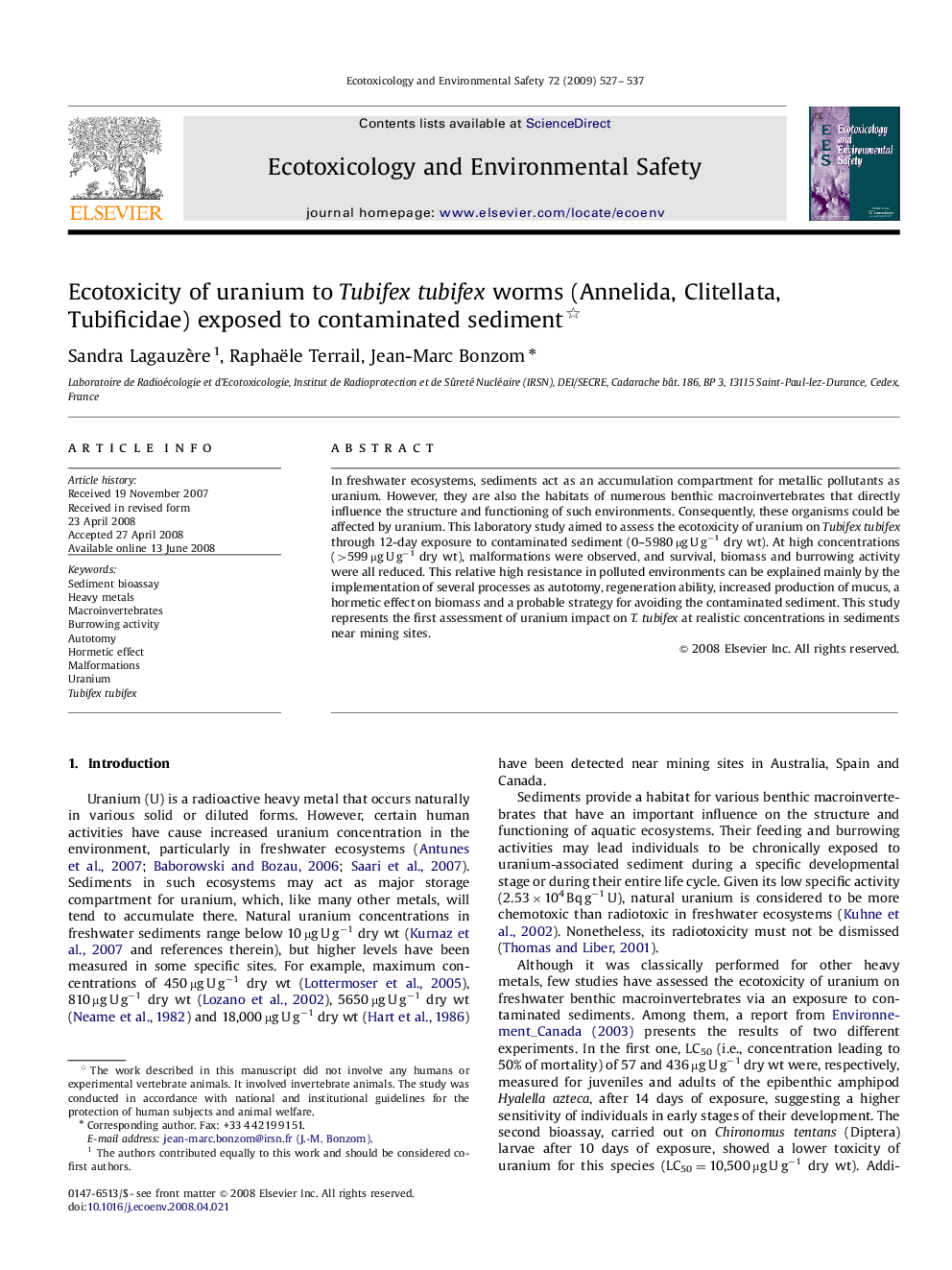| Article ID | Journal | Published Year | Pages | File Type |
|---|---|---|---|---|
| 4422016 | Ecotoxicology and Environmental Safety | 2009 | 11 Pages |
In freshwater ecosystems, sediments act as an accumulation compartment for metallic pollutants as uranium. However, they are also the habitats of numerous benthic macroinvertebrates that directly influence the structure and functioning of such environments. Consequently, these organisms could be affected by uranium. This laboratory study aimed to assess the ecotoxicity of uranium on Tubifex tubifex through 12-day exposure to contaminated sediment (0–5980 μg U g−1 dry wt). At high concentrations (>599 μg U g−1 dry wt), malformations were observed, and survival, biomass and burrowing activity were all reduced. This relative high resistance in polluted environments can be explained mainly by the implementation of several processes as autotomy, regeneration ability, increased production of mucus, a hormetic effect on biomass and a probable strategy for avoiding the contaminated sediment. This study represents the first assessment of uranium impact on T. tubifex at realistic concentrations in sediments near mining sites.
